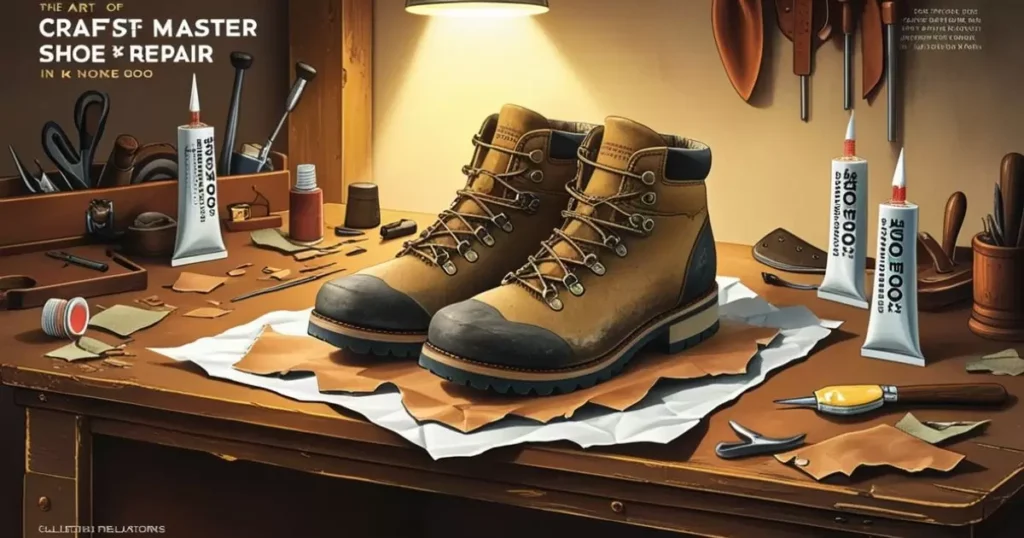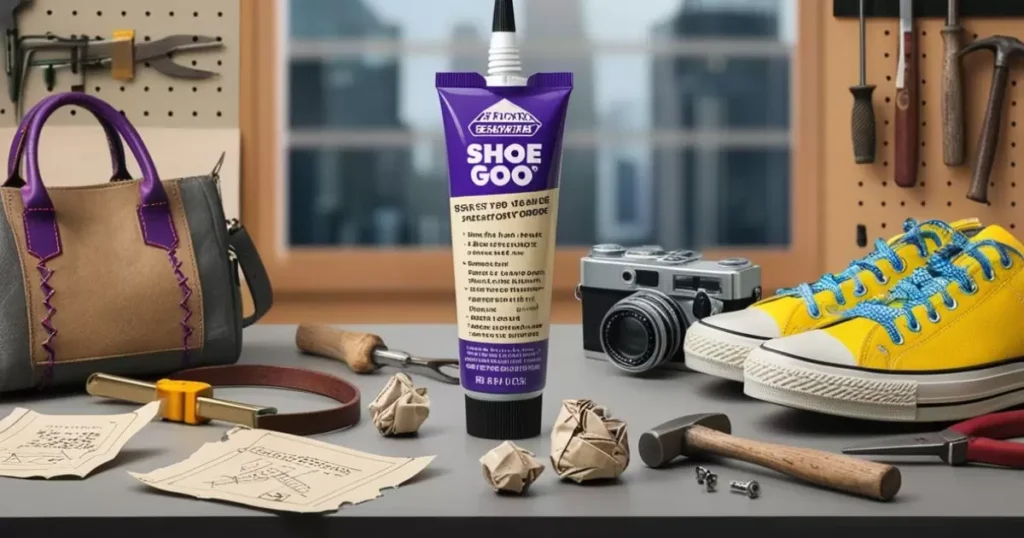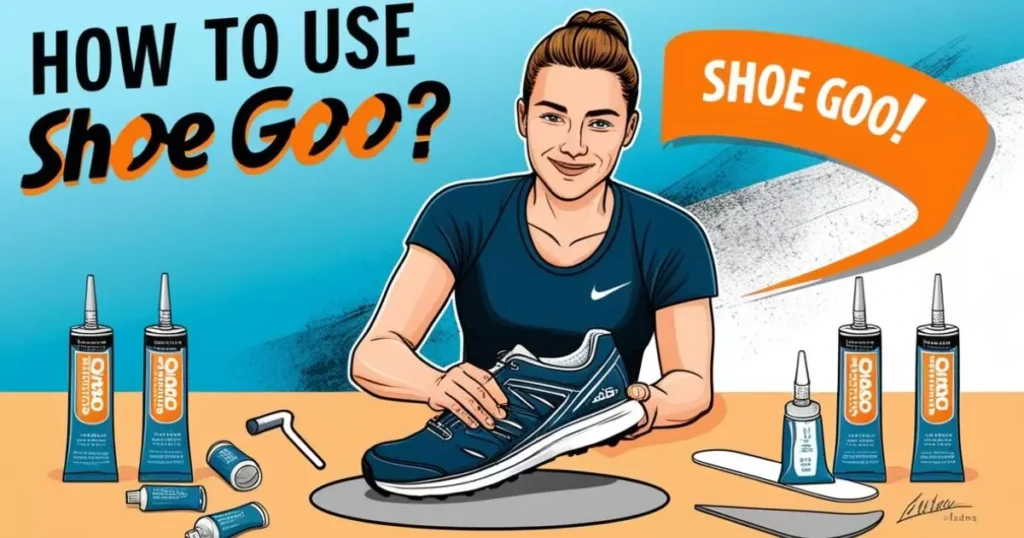Ever found yourself with a beloved pair of shoes on the brink of retirement? Enter Shoe Goo, the miracle adhesive that’s been saving soles (quite literally) since the 1970s. This comprehensive guide will walk you through everything you need to know about using Shoe Goo effectively, from basic repairs to advanced techniques that’ll make your shoes last longer than you ever thought possible.
Introduction: The Magic of Shoe Goo
What is Shoe Goo?
Shoe Goo is a versatile, waterproof adhesive specifically designed for repairing and reinforcing footwear. Created by Eclectic Products, this wonder glue has become a go-to solution for everyone from casual wearers to professional athletes looking to extend the life of their favorite kicks.
Why it’s a game-changer for footwear repair
Shoe Goo stands out for its exceptional durability, flexibility, and resistance to wear and tear. Unlike traditional glues, it creates a bond that can withstand the constant flexing and stress that shoes endure. Here’s why shoe enthusiasts swear by it:
- Flexibility: Moves with your shoe, preventing cracks and breaks
- Waterproof: Keeps repairs intact even in wet conditions
- Abrasion-resistant: Stands up to the rough and tumble of daily wear
- Versatile: Works on leather, rubber, canvas, and more
Shoe Goo 101: Getting to Know Your New Best Friend
Composition and properties
Shoe Goo’s secret lies in its unique formulation. It’s a polyurethane adhesive that cures into a rubber-like material, providing both strength and flexibility. This composition allows it to:
- Form a strong bond with various materials
- Remain pliable after curing
- Resist yellowing and degradation from UV exposure
Advantages over other adhesives
While there are many adhesives on the market, Shoe Goo offers distinct advantages:
| Feature | Shoe Goo | Standard Super Glue | Epoxy |
| Flexibility | High | Low | Low |
| Waterproof | Yes | No | Yes |
| UV Resistant | Yes | No | Varies |
| Sandable | Yes | No | Yes |
| Paintable | Yes | No | Yes |
Safety considerations and precautions
While Shoe Goo is a fantastic tool, it’s important to use it safely:
- Work in a well-ventilated area to avoid inhaling fumes
- Wear gloves to prevent skin contact
- Keep away from eyes and mouth
- Store out of reach of children and pets
- Allow proper curing time before wearing repaired shoes
“Safety isn’t expensive, it’s priceless.” – Author Unknown
Prepping for Success: Before You Goo
Gathering your tools and materials
Before diving into your repair, ensure you have everything you need:
- Shoe Goo adhesive
- Clean cloth or paper towels
- Sandpaper (fine grit)
- Rubbing alcohol
- Toothpicks or popsicle sticks for application
- Masking tape (for protecting areas you don’t want glued)
- Old newspapers to protect your work surface
Choosing the right work environment
Set yourself up for success by creating an ideal workspace:
- Choose a well-ventilated area, preferably outdoors or near an open window
- Work on a flat, stable surface
- Ensure good lighting to see details clearly
- Keep your workspace clean and free of dust or debris
Cleaning and preparing the shoe surface
Proper preparation is key to a successful repair:
- Remove any dirt or debris from the area to be repaired
- Use rubbing alcohol to clean the surface thoroughly
- If dealing with smooth surfaces, lightly scuff with sandpaper to improve adhesion
- Allow the area to dry completely before applying Shoe Goo
The Art of Application: Mastering Shoe Goo Techniques

The classic spread method
For larger repairs or reinforcing high-wear areas:
- Squeeze out a small amount of Shoe Goo onto the repair area
- Use a popsicle stick or old credit card to spread it evenly
- Create a thin, even layer for best results
- Smooth out any lumps or bubbles as you go
Precision work with the applicator tip
For smaller repairs or detailed work:
- Cut the tip of the Shoe Goo tube at a 45-degree angle
- Apply gentle pressure to create a thin bead of adhesive
- Use a toothpick to guide the goo into cracks or small spaces
- Clean up any excess immediately with rubbing alcohol
Creating custom molds for larger repairs
For rebuilding worn soles or creating custom shapes:
- Create a mold using modeling clay or silicone putty
- Apply a release agent (like petroleum jelly) to the mold
- Fill the mold with Shoe Goo
- Press the shoe into the mold and allow it to cure
- Carefully remove the shoe and trim any excess
Layering techniques for increased durability
To build up thickness or create a more durable repair:
- Apply a thin initial layer of Shoe Goo
- Allow it to partially cure (about 20-30 minutes)
- Apply subsequent layers, allowing partial curing between each
- Finish with a final thin layer for a smooth surface
Patience Pays Off: The Drying and Curing Process
Initial set time vs. full cure time
Understanding the curing process is crucial for a successful repair:
- Initial set time: 15-20 minutes (tack-free)
- Handling time: 2-4 hours (can be moved but not worn)
- Full cure time: 24-72 hours (ready for normal use)
Factors affecting drying speed
Several factors can influence how quickly Shoe Goo dries:
- Humidity: Higher humidity slows drying
- Temperature: Warmer temperatures speed up the process
- Thickness of application: Thicker layers take longer to cure
- Air circulation: Good airflow helps speed up drying
Tips for accelerating the process safely
While patience is key, you can safely speed up drying:
- Use a fan to increase air circulation (but don’t aim directly at the repair)
- Apply thin layers rather than one thick layer
- Work in a warm, dry environment when possible
- Consider using a heat gun on low setting (keep it moving to avoid overheating)
Beyond Basic Repairs: Creative Uses for Shoe Goo

Waterproofing seams and stitching
Extend the life of your shoes in wet conditions:
- Clean and dry the seams thoroughly
- Apply a thin bead of Shoe Goo along the seam
- Use a toothpick to work it into the stitching
- Wipe away any excess and allow to cure fully
Reinforcing high-wear areas on athletic shoes
Prevent premature wear on your favorite sneakers:
- Identify areas prone to wear (e.g., toe box, heel counter)
- Clean and lightly sand the area
- Apply a thin, even layer of Shoe Goo
- Use a popsicle stick to create a smooth, tapered edge
- Allow to cure fully before wearing
Creating custom grips for dance or martial arts footwear
Improve traction for specialized activities:
- Clean the sole of the shoe
- Apply Shoe Goo in a pattern (e.g., dots, lines, or swirls)
- Use a toothpick to create texture in the wet goo
- Allow to cure fully before testing
Modifying shoes for orthopedic needs
Customize shoes for better comfort and support:
- Consult with a podiatrist for specific modifications
- Use Shoe Goo to build up areas for better arch support or heel lift
- Create custom insoles by applying Shoe Goo to a mold of your foot
- Allow modifications to cure fully before wearing
Troubleshooting Common Issues
Dealing with excess goo and spills
Accidents happen, but they’re easy to fix:
- For wet Shoe Goo: Wipe away excess with a cloth dampened with rubbing alcohol
- For cured Shoe Goo: Use a sharp blade to carefully scrape away the excess
- On skin: Use hand sanitizer or nail polish remover to dissolve the adhesive
Fixing air bubbles and uneven application
Achieve a smooth, professional-looking repair:
- For wet Shoe Goo: Use a toothpick to pop bubbles and smooth out the surface
- For partially cured Shoe Goo: Gently press down on bubbles to release air
- For uneven areas: Sand down high spots after full cure and reapply if needed
Addressing poor adhesion problems
If your repair isn’t sticking:
- Clean the surface thoroughly and roughen it with sandpaper
- Ensure the shoe is completely dry before applying Shoe Goo
- Apply a thin layer of Shoe Goo to both surfaces for stronger bonding
- Use clamps or weights to hold pieces together during curing
Pro Tips from Shoe Repair Experts
Mixing Shoe Goo with pigments for color matching
Create custom-colored repairs:
- Mix a small amount of acrylic paint or pigment powder with Shoe Goo
- Test the color on a scrap piece of material
- Adjust the ratio until you achieve the desired shade
- Apply the colored Shoe Goo as usual
Using Shoe Goo in combination with other repair methods
For complex repairs, combine techniques:
- Use fabric patches with Shoe Goo for large holes
- Combine stitching and Shoe Goo for reinforced seam repairs
- Use Shoe Goo to seal the edges of leather patches
Preventative applications to extend shoe life
Be proactive in your shoe care:
- Apply a thin layer to high-wear areas before they show damage
- Use Shoe Goo to reinforce stitching on new shoes
- Create protective toe caps on work boots or climbing shoes
Eco-Friendly Aspects: How Shoe Goo Supports Sustainability

Reducing footwear waste through repairs
By repairing shoes, you’re making a positive environmental impact:
- Extends the life of shoes, reducing the need for new purchases
- Decreases the amount of footwear ending up in landfills
- Saves resources used in manufacturing new shoes
Comparing the environmental impact of repair vs. replacement
Consider the following when deciding to repair or replace:
| Factor | Repair with Shoe Goo | Buying New Shoes |
| Resource Use | Minimal (just adhesive) | High (materials, manufacturing) |
| Energy Consumption | Low | High (production, shipping) |
| Waste Generation | Minimal | Packaging waste, old shoes discarded |
| Cost | Low | Higher |
| Carbon Footprint | Small | Larger due to production and transport |
Shoe Goo Alternatives: When to Consider Other Options
Limitations of Shoe Goo
While versatile, Shoe Goo isn’t always the best choice:
- Not ideal for very flexible areas like ballet shoe toes
- May not adhere well to certain synthetic materials
- Not suitable for load-bearing structural repairs in safety footwear
Specialized adhesives for specific materials
Consider these alternatives for certain repairs:
- Barge Cement: Excellent for leather and sole reattachment
- E6000: Great for bonding fabric and more rigid plastics
- Gorilla Glue: Good for wood and certain plastics in shoes
When professional repair might be necessary
Some situations call for expert intervention:
- Complex structural damage to the shoe
- Repairs on expensive or collectible footwear
- When special equipment or techniques are required
“The best investment is in the tools of one’s own trade.” – Benjamin Franklin
Frequently Asked Questions
Can Shoe Goo fix ripped soles?
Yes, Shoe Goo can repair torn or ripped soles on shoes. Apply a thin layer to the tear and hold together until dry.
How long does it take to dry?
Shoe Goo takes about 24 hours to fully dry and cure. Wait at least 6 hours before wearing repaired shoes.
Can you use it on other items?
While intended for shoes, Shoe Goo can bond a variety of materials like rubber, leather, and fabric. Use sparingly for non-shoe repairs.
What surfaces can it stick to?
Shoe Goo adheres well to rubber, leather, fabric, and some plastics commonly found in shoes. Clean and roughen surfaces for better adhesion.
How do you clean up excess?
To clean up extra Shoe Goo, wipe with a paper towel before it cures. Once dried, excess needs to be scraped or peeled off carefully.
Conclusion: Stepping Up Your Shoe Care Game
Mastering the use of Shoe Goo opens up a world of possibilities for extending the life of your favorite footwear. From basic sole repairs to creative customizations, this versatile adhesive proves that with a little know-how and patience, you can keep your shoes going strong for years to come.
Remember these key points:
- Proper preparation is crucial for a successful repair
- Take your time and allow for full curing
- Don’t be afraid to get creative with your repairs and modifications
- Consider the environmental impact of repairing vs. replacing
By incorporating Shoe Goo into your shoe care routine, you’re not just saving money – you’re also making a small but significant contribution to reducing waste and embracing a more sustainable approach to footwear. So grab that tube of Shoe Goo and give your old favorites a new lease on life. Your feet (and the planet) will thank you.

An author is a creator of written content, producing works ranging from books and articles to blog posts and essays. They use their creativity, knowledge, and research to inform, entertain, or persuade readers. Authors often have a unique voice and perspective, contributing significantly to literature and various media.

